Today we celebrate the Feast of St Francis D’Assisi. In honor of this occasion, and in conjunction with October being Polish Heritage Month, I bring you the story of St Francis D’Assisi Catholic Church in Detroit, Michigan.
St Francis D’Assisi Catholic Church was the 4th Polish parish to be organized in Detroit (following St Albertus (1872), St Casimir (1881), and Sweetest Heart of Mary (1897)). The Polish population in Detroit was growing rapidly in the late 1800s and through the turn of the century. As a result, several members of St Casimir parish petitioned the Diocese of Detroit for a new parish in the area of Junction and Buchanan streets. Their petition was granted and a pastor was appointed to organize a new parish.
St Francis’s first pastor, Reverend Romuald Byzewski, directed the building of the first structure on property purchased at Wesson and Buchanan streets. That building was a combination church (upper level) and school (lower level). The church sat 700 people and opening enrollment at the school was 300 pupils. The first Mass was celebrated in the church on Easter Sunday of 1890.
The new little parish continued to grow and when Reverend Feliks Kieruj succeeded Rev. Byzewski as pastor of St Francis he conducted a drive for a new, larger church building. The new building was opened in June of 1905 and a grand church it was! The church seats 1700, has beautiful stained glass windows, and is Italian Renaissance in design. It is 230 feet long and 123 feet wide and cost $145,000.00 to build.
The drive to build the new church was so successful that Rev. Kieruj continued his effort and oversaw the building of a rectory, convent, and a parish hall. Later a new, larger school building was built.
As a result of all this building, the parish accumulated substantial debt. Father Alexander Grudzinski was successful in getting the debt paid off and as a reward for doing so the church of St Francis was consecrated on June 4, 1929. It was the first church consecrated in Michigan and only the fifth in the U.S. My mother always told me that a consecrated church cannot be added on to or sold. It must stand until it crumbles of its own accord. You can read details about church consecration at the Catholic Encyclopedia web site.
At the time St Francis Church was built, the neighborhood it was in was made up largely of Polish immigrants. They attended Mass there, sent their children to the parish school, and for the most part were buried in nearby Holy Cross Cemetery. Over the years, starting in the 1940s with the building of area expressways and accelerating in the 1960s and 70s, the original Polish immigrants died or moved out of the area to nearby suburbs. The population that moved in was first African American and later Hispanic. More recently the neighborhood has succumb to urban blight with more empty lots than houses. It’s a sad state for this once vibrant neighborhood of Polish immigrants. St Francis D’Assisi Church still stands at the corner of Wesson and Buchanan Streets and the parish is still viable. However, there are few with Polish heritage that attend this church anymore. Mostly the parish is made up of Hispanic residents now. They may hear Mass in a different language than those who built the church but they too work hard to keep the parish going. That’s not an easy task in a depressed urban setting.
The parish school is no longer in operation. The building was leased/sold to another group that runs the Hope of Detroit Academy there now.
I have many family ties to St Francis D’Assisi Church. My paternal grandparents lived just one block southwest from the church/school property. Here is a view from the property where my grandparent’s home once stood, looking back at St Francis school and church.
My father and all of my paternal aunts and uncles attended St Francis grade school. Several of my aunts and uncles married at St Francis as well. When my parents married, their first home was on Campbell Street, one block north of the church/school property. My brothers were baptized at St Francis and started grade school there as well before my family moved to the suburbs. Here is a view of the church/school grounds from my parent’s first house on Campbell Street.
I visit the church from time to time and try imagine what it must have been like in the 1910-1950 era when it was in a densely populated community of first and second generation Polish immigrants. It’s easy to imagine when inside the church, where little has changed. It’s much harder to imagine outside the church where empty lots and decaying buildings are prevalent. It is my fervent hope that the beautiful St Francis Church will remain standing for many, many years to come. Maybe one day the city of Detroit will experience a rebirth and the neighborhood around the church will thrive again. St Francis is the patron saint of animals and the environment. Perhaps he will bless the rebuilding of the neighborhood where previous residents erected a grand church in his honor.
The Souvenir book of the Golden Jubilee of St. Francis Parish, 1890-1940 has been cataloged and is searchable on the PGSA web site.
The following microfilms of St. Francis church records are available at the Burton Historical Collection of the Detroit Public Library: Film No.1042
Reel 1: Baptisms April 1891-June 1911
Reel 2: Baptisms June 1910-March 1918
Reel 3: Baptisms March 1918-February 1931
Marriages January 1916-October 1938
Deaths January 1920-May 1950
Reel 4: Marriages May 1891-1916



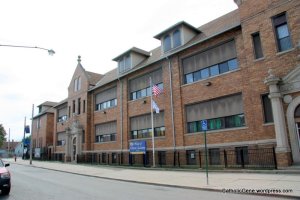
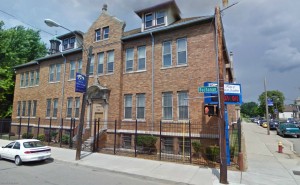
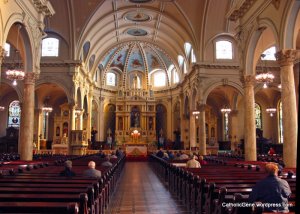
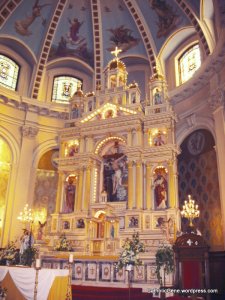
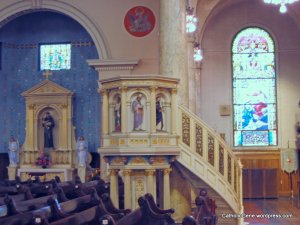


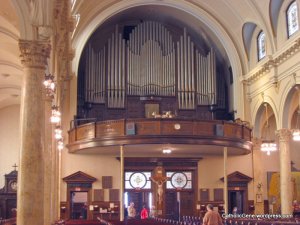


This is excellent post. The text was perfect with beautiful and lovely photos. After photographing 388 churches in Finland, I have slight knowledge.
I wish all the good to You.
A beautiful post. Urban renewal does occur and St. Francis will probably become a guiding light for that to happen in this area (from a protestant follower of this site).
Who is the author of this article
I started 1st grade at St. Francis in 1978. I had my baptism and first communion at St. Francis. My god-parents were from Poland, but have passed on many years ago. I have fond memories of them and my time at St. Francis. What a great time it was then. It really saddens me to read some of the things outlined in this post. I have not been back to Detroit in so long, but the next time I do go back there I will have to stop by.
I have to say that the author is wrong when he/she states that “few people of Polish Heritage” belong to St. Francis and work hard to keep it alive. Most of the parishioners are of Polish Heritage and they are the people who work hard to keep the church alive. Perhaps the author should visit the choir loft during Mass, where he/she will see Polish people in the choir, or perhaps come to a Fish Fry held every Friday in Lent where he/she will see Polish people working the fish fry, or attend a pancake breakfast or particiapte in a Living Rosary. One visit to a church tells you nothing about the church and its parishioners.
I agree with Jane, and I don’t think she is being defensive, just sharing her experience at the parish. The majority coming to mass and attending social activities are still Polish. I attend and see first hand as well. It’s not to say we do not have Latino parishioners, but the church is still mostly Polish.
Jane, You sound defensive. I’m sorry if the article feels inaccurate to you. I wrote what I know to be true, that the Polish neighborhood around the church isn’t what it used to be. And while there still are parishioners with Polish ethnic ties at St Francis, as well as at nearby St Hedwig, (I hope that continues well into the future!) the Masses aren’t said in Polish anymore but in English and Spanish. Looking around at Mass on Sunday I observed that Latino faces outnumbered Polish. I didn’t hear any Polish hymns being sung like at Sts Peter and Paul or Sweetest Heart of Mary. Oh how I wish I could go back in time to the days when St Francis was Polish through and through and I felt immersed in the Polish culture when visiting there!
Saint Francis will always be a polish church that was built for the polish immigrants of the City of Detroit. yes the amount of parishioners may have decreased but the ones who have stayed an support the church in a manner they can are to be blessed for doing so. No matter what language you speak or heritage your ancestors are,
we celebrate Mass to the same God. Let us not forget the reason we come together on that day.